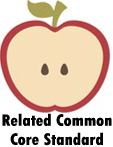Letters and Sounds Worksheets:
Fill in the Letter Sounds - Look at the pictures and fill in the missing letter to complete each word.
My name begins like... - Draw a picture of something that begins with the same letter as your name.
Letters and Their Sounds - Say the name of each picture. Write the first letter on the line.
Beginning Sounds - Draw a line matching each picture with the letter that makes its beginning sound.
Beginning Letter Sounds - Circle the picture whose name begins with the letter at the beginning of the row.
In The Beginning - Choose the letter that matches the sound the name of each picture begins with.
What's to Eat? - Say the name of each picture. Which letter will complete the word? Draw a line connecting the letter to the name of each picture. Then write the letter in the blank.
Draw the Same As Sound - Say the name of each picture. Then, in the box next to it, draw something that has the same beginning sound.
Fill in the Missing Letter - Say the name of each picture aloud. What sound is missing? Fill in the missing letter.
Cut and Paste - Cut out the letters and glue them next to the picture that begins with that letter.
What Do You Like? - Use the stick figure below to draw a picture of yourself. Then, in the boxes below, draw pictures of two things that begin with the same sound as your first name.
Picture Words - Say the name of the picture. Write the letter that makes the beginning sound to complete the word.
The Sounds of Letters - Say the name of each picture. Write the letter whose sound you hear at the beginning of the word.
It Begins! - Circle the correct beginning sound for each picture.
Change the Letter, Change the Sound - Look at the pictures and fill in the missing letter to complete each word.
More Letter Sounds Worksheet Topics:
Blending Sounds to Make Words - This is where phonics skills come in really handy.
Long and Short Sound Spelling - You may come across some new vocabulary terms in here.
Primary Consonant Sounds - This focuses on the front leading consonant for most of the chime that comes out.
Short Vowel Sounds - There are seven of these, but only five a common.
Sounds of Consonant Digraphs - We look at how letters combinations that lack vowels roll off the tongue.
Writing Short Vowel Sounds - We explore how to get these down on paper.
